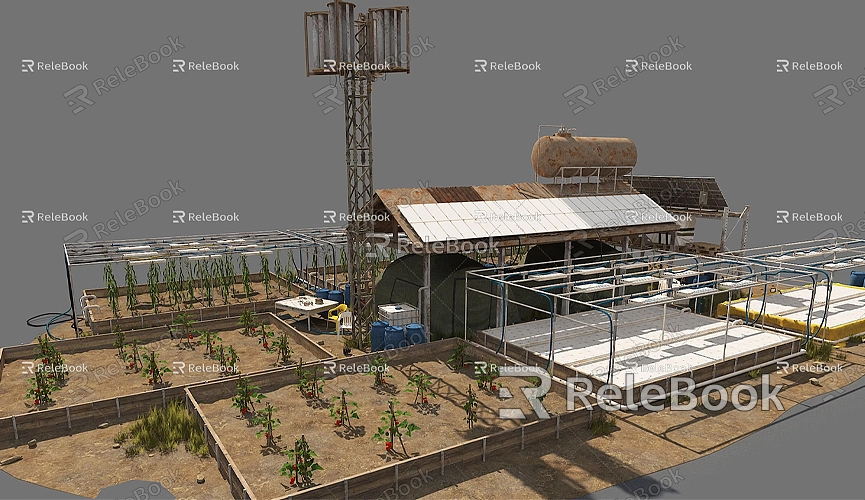How to Model Terrain in SketchUp
Creating realistic terrain models is crucial in architectural design and landscape planning. SketchUp, with its intuitive and powerful 3D modeling capabilities, allows users to easily and quickly build complex terrain. Whether you are an architect, landscape designer, or a 3D modeling enthusiast, learning how to create terrain models in SketchUp will enhance the expressiveness of your projects. This article will introduce you to the tools and features in SketchUp that can help you efficiently create terrain models and share practical modeling tips.
Import Contours to Create Terrain
If you already have contour data, you can directly import it into SketchUp as a foundation for your terrain modeling. Contours are lines that represent changes in terrain elevation, with each line indicating the same height, enabling you to accurately recreate real-world terrain.

You can obtain contour data from various sources, such as exporting from CAD files or other GIS software. Once the contour data is imported into SketchUp, you can use the "Sandbox Tool" to convert these lines into 3D terrain. This process is straightforward, as SketchUp will automatically generate a terrain surface that matches the contours, significantly saving manual modeling time.
Use the Sandbox Tool to Create Terrain
SketchUp’s Sandbox Tools are specifically designed for terrain modeling, allowing you to quickly generate complex terrain surfaces. It offers several key features, including "From Contours" and "Modify Terrain." These tools can help you create terrain based on imported contour data or from scratch.
If you don’t have existing contour data, you can manually draw a few contour lines and use the "From Contours" function to automatically generate the terrain. This tool creates a smooth 3D surface based on the position and shape of the contours, illustrating the undulations of the terrain.
The "Modify Terrain" feature allows you to further adjust the generated terrain. You can use it to flatten areas, carve out valleys, or add slopes. This feature is very flexible and can accommodate various terrain modifications.
Manually Adjust Terrain Details
Sometimes the automatically generated terrain may not fully meet your design requirements, such as being too smooth or not precise enough. In this case, you can manually adjust terrain details.
First, use the "Push/Pull Tool" to stretch or compress specific areas, altering the height and shape of the terrain. This method is suitable for small adjustments, such as creating a flat foundation for a building or shaping a specific hill.

Next, SketchUp's "Smoothing Tool" can help you adjust the smoothness of the terrain surface. An overly flat terrain may look unnatural, so using the smoothing tool can make the surface appear more natural and fluid while preserving the original height variations.
Add Textures and Materials to the Terrain
After building the basic terrain model, the next step is to add textures and materials to the surface. Good materials can make your terrain model look more realistic, showcasing different elements found in actual scenes, such as grass, rocks, and soil.
SketchUp includes some basic terrain materials, but if you want higher-quality visual effects, consider downloading additional 3D textures from external resources. Free resources from Relebook are recommended. If you need many high-quality 3D textures and HDRI while creating models and virtual scenes, you can download them for free from [Relebook](https://textures.relebook.com/). Using high-quality terrain textures can significantly enhance the realism of your terrain models.
Optimize and Simplify Terrain Models
When creating large terrain models in SketchUp, the model files can become very large, causing slow performance. Therefore, optimizing the terrain model is particularly important.
First, you can simplify the terrain by reducing the polygon count. The terrain surfaces generated in SketchUp may contain a lot of detail that can be unnecessary in some cases. You can use the "Simplify Polygon" plugin to reduce the model’s complexity, speeding up operation.
Secondly, use the "Layers" feature to group and manage the terrain, separating buildings, roads, vegetation, and other elements from the terrain model. This way, you can selectively hide or show different parts during operation, reducing the model’s computational load.
Add Buildings and Landscape Elements
After completing the terrain model, you can continue to add buildings, roads, trees, and other elements. These additions can make your terrain model more complete, particularly in architectural and landscape design, where the integration of terrain and surrounding environments is crucial.
SketchUp's "Component" feature helps you quickly place buildings and landscape elements on the terrain. By downloading ready-made 3D model components, such as trees, vehicles, and buildings, you can rapidly construct a complete scene. For exquisite 3D models, you can visit [Relebook](https://3dmodels.relebook.com/), which offers a wealth of high-quality 3D resources to greatly enhance your modeling efficiency and quality.
Modeling terrain in SketchUp is not complicated; using the Sandbox Tool allows you to easily create terrain surfaces that meet project requirements. By importing contour data or manually adjusting details, you can produce precise and realistic terrain models. Adding appropriate materials and model elements will make your work more persuasive and visually impactful. With these techniques mastered, you will be able to efficiently tackle complex terrain modeling tasks.
Finally, if you need many high-quality 3D textures and HDRI for creating models and virtual scenes, you can download them for free from [Relebook](https://textures.relebook.com/). If you need beautiful 3D models, visit [Relebook](https://3dmodels.relebook.com/) for a wide array of premium 3D resources to enhance your modeling efficiency and results.

